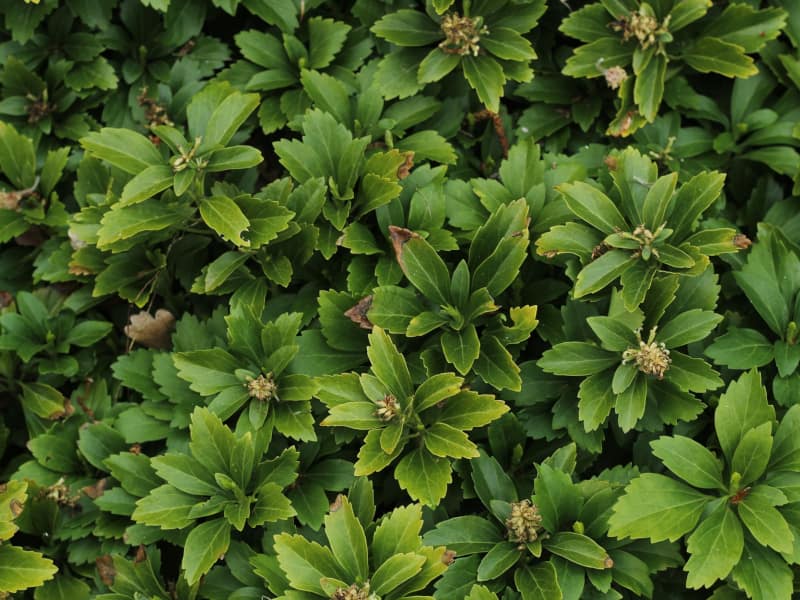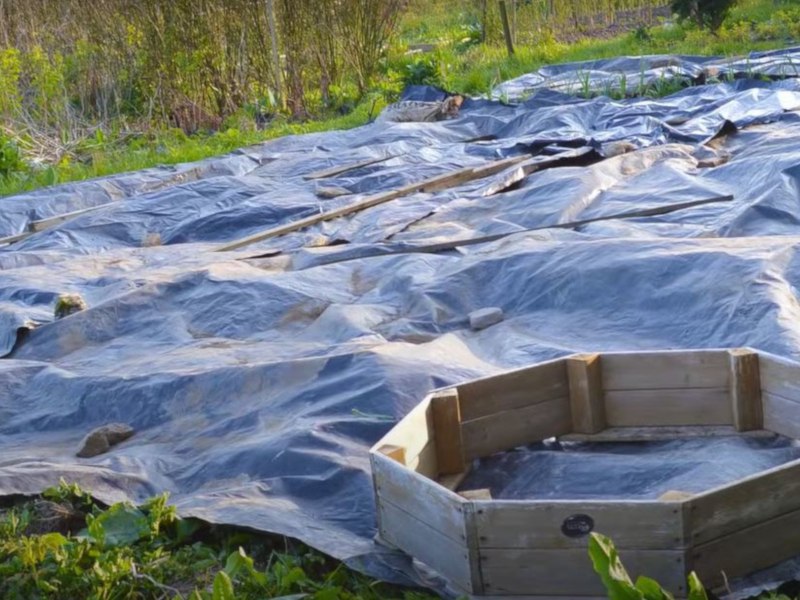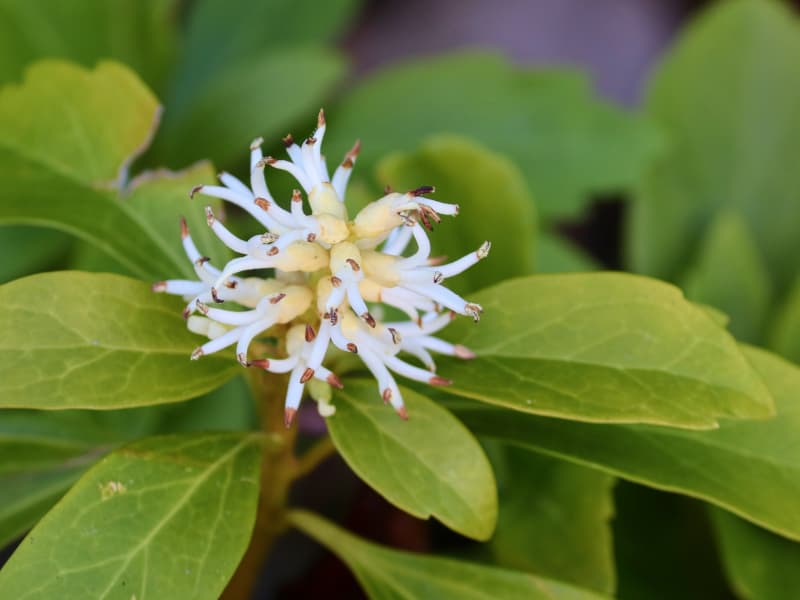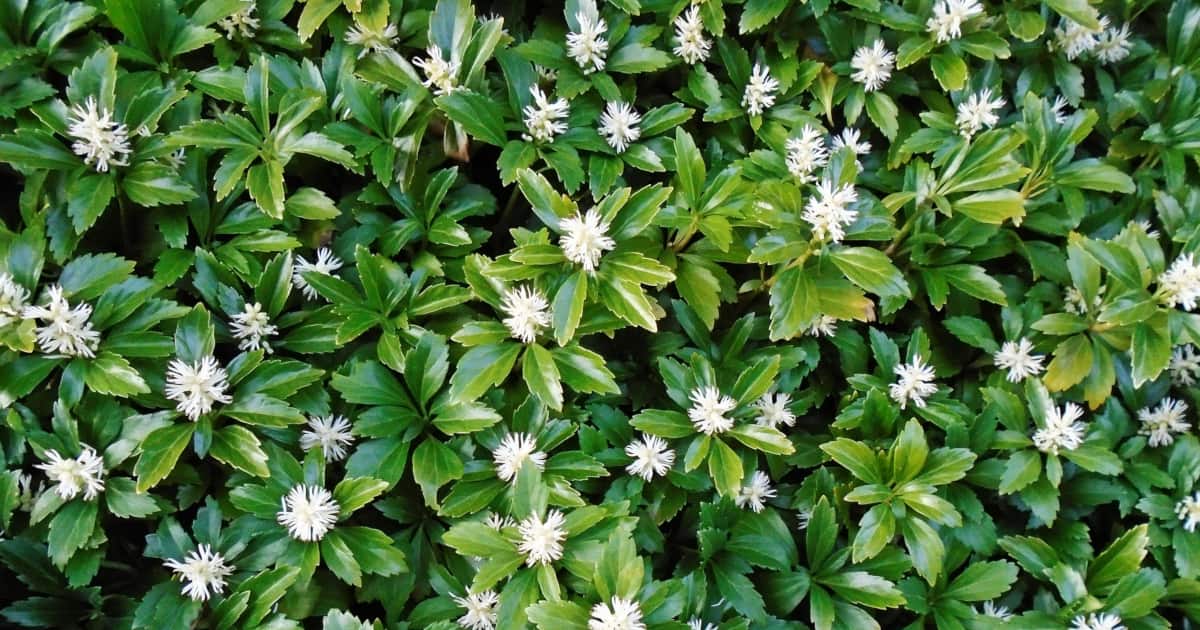How To Get Rid Of Pachysandra
Pachysandra is a popular evergreen ground cover that can create a lush carpet of green foliage in shady areas. However, this plant can also become a nuisance if it spreads too much and invades other plants.
Pachysandra terminalis, also known as Japanese Spurge, is the most common type of pachysandra that can be hard to control once established. It grows by underground stems called rhizomes that produce new roots and shoots. These rhizomes can extend far beyond the visible plant, making removing them difficult.
If you want to remove pachysandra from your garden or lawn, you must use some effective methods to remove its roots and prevent its regrowth. In our guide, you can learn more about precautions and tips to avoid harming the environment or other plants while eliminating Japanese Spurge; invasive plants grow and reproduce quickly, which is a challenge.

By the end, you’ll better understand removing Pachysandra and your challenges. At the least, you’ll see how getting rid of Pachysandra can leave you with a more diverse and beautiful landscape. (Learn How Long Does Roses Last)
What Is Pachysandra?
Pachysandra is an evergreen ground cover native plants to Japan and China. It is also commonly referred to as Japanese Spurge and is often used in landscaping as a ground cover in shaded areas. Pachysandra is known for its shallow root system and horizontal underground stems, which allow it to spread and form a dense mat of foliage.
The plant material comprises glossy, dark green leaves and small white flowers that bloom in the spring. While pachysandra can be an attractive addition to a garden or landscape, it can also be invasive and difficult to remove once it is established. Because of its hardy nature, it’s challenging to completely kill pachysandra without using herbicides or physical removal.
Pennsylvania Sedge vs. Japanese Pachysandra
Pennsylvania Sedge and Japanese Pachysandra are two different types of ground cover plants. Pennsylvania Sedge, also known as Carex pensylvanica, is a native plant commonly found in eastern North America. It is a grass-like plant with narrow leaves that grow in clumps and is often used as a natural alternative to traditional turf as it needs less maintenance and is more environmentally friendly.
Japanese Pachysandra, or Pachysandra terminalis, is an evergreen ground cover native to Japan and China. It is commonly used in landscaping and is known for its glossy, dark green leaves and small white flowers that bloom in the early spring. Additionally, Pennsylvania Sedge is a native plant and is more environmentally friendly, while Japanese Pachysandra is non-native and can be invasive.
Remove Pachysandra Terminalis Evergreen Groundcover By Digging
Digging is a challenging but environmentally safe way to remove pachysandra from your garden. It works best in small areas where you can reach the roots easily. You need a spade and a hoe to dig out pachysandra.
- First, cut the foliage and remove the top 4 to 6 inches of soil where the plants are.
- This will show you the shallow root system of pachysandra.
- Then, use the hoe to cut under the roots and pull them up with each stroke.
- Ensure you don’t leave any roots in the soil because they can grow back fast.
- Throw all the plant material away in a garbage bag or compost bin far from your garden. Do this until you have no more pachysandra in your garden.

How To Kill pachysandra With Black Plastic
To kill pachysandra plants using black plastic.”
Remove any plant material and grass from the area.
Lay black plastic over the pachysandra ground cover, ensuring it covers the entire area.
The black plastic will block sunlight and prevent the pachysandra plants from photosynthesizing, causing them to die off.
However, this method is best suited for small areas, as keeping the plastic in place on windy or rainy days is challenging.
Additionally, black plastic should only be used as a last resort since it is not environmentally friendly, and herbicides left in the ground can kill other plants.
After several weeks, remove the black plastic and dig out any remaining roots or plant debris. (Read Does Mowing Weeds Spread Them)
Using Weed Killer for Pachysandra
Another method to consider when eliminating pachysandra is using a weed killer. However, choosing a weed killer specific to pachysandra plants is essential and won’t harm other nearby plants. A systemic herbicide is the most effective option as it targets the roots of the pachysandra plants, but a broad-spectrum herbicide can also be used.
One thing when using these weedkillers, any Japanese Pachysandra ground cover in shady areas require more time to kill as the plant won’t absorb the weedkiller as fast as weeds or other plants in the sun.
Here is a step-by-step guide on how to use systemic herbicide to kill Japanese pachysandra completely:
- Wait for early spring when the Japanese pachysandra ground cover is actively growing.
- Choose a systemic herbicide specific to pachysandra plants that won’t harm other nearby plants.
- Wear protective clothing, including gloves and goggles, to avoid skin or eye irritation.
- Apply the herbicide directly to the Japanese pachysandra ground cover, ensuring you thoroughly cover all parts of the plant.
- Avoid applying the herbicide on a windy or rainy day to prevent it from drifting onto other plants.
- Wait several weeks for the herbicide to take effect, and the Japanese pachysandra plant root system wilts and dies.
- Once the Japanese pachysandra weeds have died, remove any remaining roots or plant debris from the ground.
- Please dispose of the plant debris properly and follow the herbicide manufacturer’s instructions for removing pachysandra and disposing of it safely.
- Monitor the area for any regrowth of pachysandra weeds and apply the herbicide again if necessary.
It’s important to note that herbicides should be a last resort and only used in small areas. Always follow the manufacturer’s instructions and use caution to avoid harming other plants and the environment. Note: if you have any remaining weed killer, store this in the original container and out of direct sunlight. Shady areas in your garden shed are best.

How To Control Japanese Pachysandra Growth
The USDA Forest Service designated Pachysandra ground cover as an invasive species because of its rapid growth pattern and ability to suffocate other plants. Because some people use the Japanese and China native plants in their landscaping, it’s challenging to maintain. A mix of manual and chemical methods is required to control the spread of Pachysandra.
The Pachysandra Terminalis stays in the desired site and does not spread to other locations when these procedures are used.
- Get the bottom of the Pachysandra Terminalis stems as close to the ground as possible while uprooting the plant to get the entire root instead of just the stem.
- The USDA Forest Service recommends applying glyphosate, an effective Japanese pachysandra killer, to the ground you just weeded.
- Create a 3- to 4-foot-wide trench along the perimeter of the pachysandra infestation. The trench should be about 6 inches deep to accommodate plastic landscaping edging.
- Unroll the plastic landscape edging and place one end in a trench edge. The “V” shaped edging should point downward toward the pachysandra plant area. When you have finished rolling out the frame to the end of the trench, trim the extra off with a utility knife.
- In the lower “V,” place a landscaping stake about 3 inches from the end of the edging and almost parallel to the ground. The stake should be fully inserted into the frame by using a hammer.
- Firmly compact the soil back into the trench—Stomp on the soil with your foot to compact it as much as possible.
Conclusion: Best Time To Remove Pachysandra?
The best time to remove Pachysandra is in the early spring when the ground is moist and the plant is actively growing. This is when the roots are more likely to come out of the ground quickly, and the plant is less likely to resprout. (Read Scotts Green Max Vs Turf Builder)
Removing Pachysandra during the early spring can prevent it from producing seeds, contributing to its spread. However, it’s important to note that removing Pachysandra can be a laborious task, especially if the plant has established itself over a large area.
In such cases, using herbicides or physical removal methods such as digging or smothering with black plastic may be necessary. It’s also essential to carefully dispose of Pachysandra plant material to prevent its spread to other areas.






